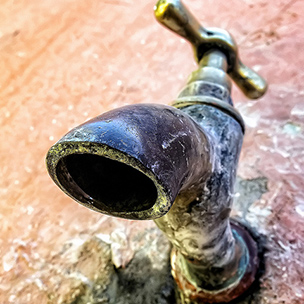September 12, 2014 — As seen in California’s ongoing drought, water acquisition is not just an issue in the developing world. Climate change, industrial and residential use, and inefficient irrigation all contribute to water scarcity. However, researchers from Utrecht and McGill universities offer solutions to significantly reduce water stress (when more than 40 percent of an area’s water is withdrawn) for the one-third of the global population affected by it.
Recognizing that there is no silver-bullet solution, the researchers in a paper published in Nature Geoscience outline six “wedges” that, when combined — in various ways in different places — can mitigate water stress. Each wedge represents a different strategy that could theoretically reduce water stress by 2 percent in a little over 35 years. In combination, all six wedges have the potential to reduce the number of people facing water stress by 12 percent by 2050.
The water-stress wedges are defined as either “hard path” solutions, such as increasing water storage in reservoirs and desalination of seawater, or “soft path” solutions, such as irrigation efficiency and limiting population growth.
While hard-path options might require more initial capital, soft-path wedges necessitate significant social and socioeconomic changes. However, overcoming these challenges could mean greater water security. Article by Kayla Walsh. Photo by Marcelo César Augusto Romeo (Flickr | Creative Commons)
Ensia shares solutions-focused stories free of charge through our online magazine and partner media. That means audiences around the world have ready access to stories that can — and do — help them shape a better future. If you value our work, please show your support today.
Yes, I'll support Ensia!
